Wednesday, July 20, 2016
Evictions and Housing: Why Should We Care?
by: Hites Ahir
Evicted: Poverty and Profit in the American City by Matthew Desmond—is a “brilliant book about housing and the lives of eight families in Milwaukee”, the Guardian writes. From 2008 to 2009, he lives in a trailer park in Milwaukee to study and document the lives of people who spend more than half of their income on rent. The two years of fieldwork generates more than 5,000 pages single-spaced notes (San Francisco Chronicle). He even employs a fact checker to verify every detail (Wall Street Journal).
Desmond is currently the John L. Loeb Associate Professor of the Social Sciences at Harvard University and Co-Director of the Justice and Poverty Project. In 2015, Desmond was awarded a MacArthur “Genius” grant. What follows is a review of the reviews of Desmond’s new book.
Evictions: How big? How serious?
One of the main findings of the book is that “eviction is a much more frequent event than has been thought and has long-term consequences for the health and stability of families (…) from 2009 to 2011, 13% of Milwaukee renters had been evicted (…). Further, renters thus evicted moved to neighborhoods that were on average 5.4 percentage points poorer and 1.8 percentage points more crime-ridden than the neighborhoods in which renters who moved more voluntarily ended up. These findings lend considerable support to the claim that eviction causes poverty.” (Wall Street Journal).
Another review from the New York Times says: “How can you hang on to a job, send your child to school, or build roots in a community if you are constantly changing homes, each one more dilapidated and dangerously located than the next?” The Guardian notes that “an eviction on your record makes the next apartment harder to get.” And “What is clear is that this is a problem that affects a lot of people, with one in five renters spending half or more of their income on housing and over one in five black women having been evicted”, writes the Independent.
There is also a quote from the book that appears in almost all of the reviews. It says: “If incarceration had come to define the lives of men from impoverished black neighborhoods (…) eviction was shaping the lives of women. Poor black men were locked up. Poor black women were locked out.”
Low-income rental housing market: Is it affordable? Is it profitable?
The Independent notes that “Post-war US housing policy has shifted from building and maintaining housing projects for the poor, towards providing limited “vouchers” that can be used with any rental provider.”
However, the problem of limited “vouchers” is that “sixty-seven percent of poor renting families received no federal assistance for housing at all in 2013 (…). The very people least capable of spending 70 to 80 percent of their incomes on rent are exactly the ones forced to do so (…) With vacancy rates for cheap housing in the single digits, the moment is ripe for exploitation. It’s a landlord’s market” (New York Times). “And all of this comes [on top of] gentrification and surging housing costs at a time of stagnant wages” (Boston Globe).
The New York Review of Books points out that “The government says that rent and utilities are affordable if they consume no more than 30 percent of a household’s income. Analyzing census data, Desmond finds that the majority of poor households pay over 50 percent of their income for shelter and more than a quarter pay over 70 percent. Among the tenants in housing court, a third spend at least 80 percent. Evicted’s families double up with strangers, sell food stamps, and pirate electricity but inevitably fall behind.”
Moreover, “You might not think that there is a lot of money to be extracted from a dilapidated trailer park or a black neighbourhood of “sagging duplexes, fading murals, 24-hour daycares”. But you would be wrong”, according to the Guardian. In the book, on one end there is one of the characters—Lamar—a single father and whose legs had to be amputated due to frostbite—makes $628 dollars a month, of which $550 dollars goes to rent, leaving $2.19 a day for the family. Similarly, Arleen—a single mom—spends 95 percent of $628 dollars monthly welfare check on rent for an apartment without appliances (Huffington Post).
On the other end, there is “The landlord who evicts Lamar, Larraine and so many others is rich enough to vacation in the Caribbean while her tenants shiver in Milwaukee. The owner of the trailer park takes in over $400,000 a year” (New York Times). Also, “There is a moment where Sherrena [a landlord in Evicted] is buying a duplex for $8,000, putting a bit of money into it, and recouping her total costs in a year. That’s the kind of return that attracts some folks” (Slate). However, even in the context of contrasting fortunes, the Wall Street Journal asks: “if the profit were less, would those accommodations remain available?”
Policy suggestions?
“We have to recognize how essential housing is to driving down poverty and recognize that we can’t fix poverty without fixing housing” (Slate). So on policy suggestions, Desmond “solutions are simple: grant tenants the right to legal counsel in housing court, and create a universal voucher system for families below a certain income level, modeled after programs already in place in countries like Great Britain and the Netherlands” (San Francisco Chronicle). Desmond proposals also include restriction on the rents landlords can charge.
What is the estimated cost of annual housing assistance for the poor? “Tax relief on housing costs for American homeowners amounts to $171bn a year. Annual housing assistance for the poor is less than a quarter of that. Mortgage interest, tax relief and capital gains exclusions cost the US three times more than the entire cost of universal housing provision, according to the Guardian.
Why should we care?
“The Harvard center found that low-income households with severe rent burdens spent 38 percent less on food than similar households with affordable shelter, 55 percent less on health care, and 60 percent less on transportation (…) Evicted isn’t a depressing book. It is also a stirring reminder that the US accepts as ordinary a depth of poverty that is extraordinary and cruel. At its heart is a simple message: No moral code or ethical principle, no piece of scripture or holy teaching, can be summoned to defend what we have allowed our country to become” (New York Review of Books).
by: Hites Ahir
Evicted: Poverty and Profit in the American City by Matthew Desmond—is a “brilliant book about housing and the lives of eight families in Milwaukee”, the Guardian writes. From 2008 to 2009, he lives in a trailer park in Milwaukee to study and document the lives of people who spend more than half of their income on rent. The two years of fieldwork generates more than 5,000 pages single-spaced notes (San Francisco Chronicle).
Posted by at 7:03 AM
Labels: Global Housing Watch
Tuesday, July 19, 2016
House Prices in Peru
“Housing prices, as reflected by the median apartment prices in Lima, appear high although the price increases since the second half of 2014 have been more subdued than in the previous four years (the average annual growth of apartment prices (in constant soles) from 2011 to first half of 2014 was 14 percent). This may not accurately reflect the segmentation in the market, where there is an oversupply of high-end condominiums in certain residential areas in Lima while low-income housing is in short supply”, says IMF’s report on Peru.
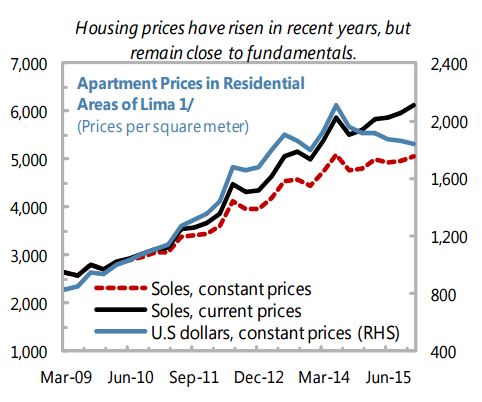
“Housing prices, as reflected by the median apartment prices in Lima, appear high although the price increases since the second half of 2014 have been more subdued than in the previous four years (the average annual growth of apartment prices (in constant soles) from 2011 to first half of 2014 was 14 percent). This may not accurately reflect the segmentation in the market, where there is an oversupply of high-end condominiums in certain residential areas in Lima while low-income housing is in short supply”,
Posted by at 5:00 AM
Labels: Global Housing Watch
Friday, July 15, 2016
Housing Market in Poland
“Credit standards on loans have remained broadly unchanged in recent quarters, with the exception of housing loans, where standards tightened on the back of new prudential recommendations and reduced appetite among some banks for expanding the housing loan portfolio”, says IMF new report on Poland.
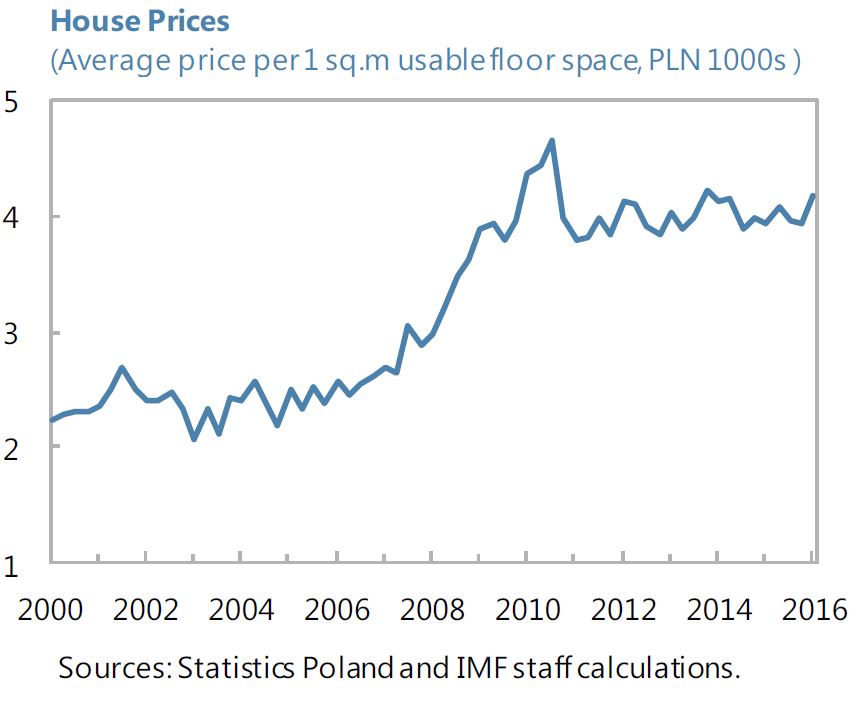
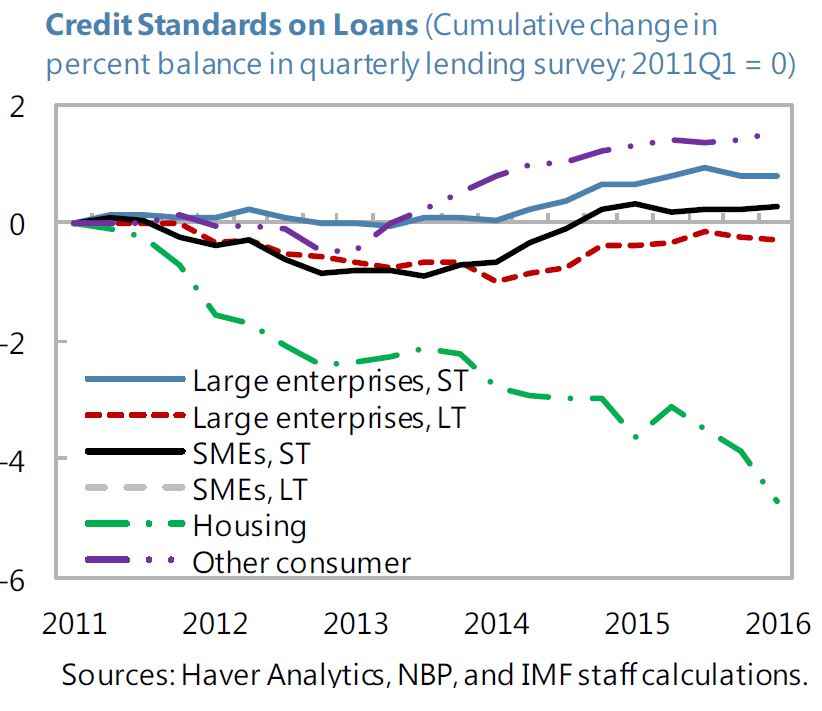
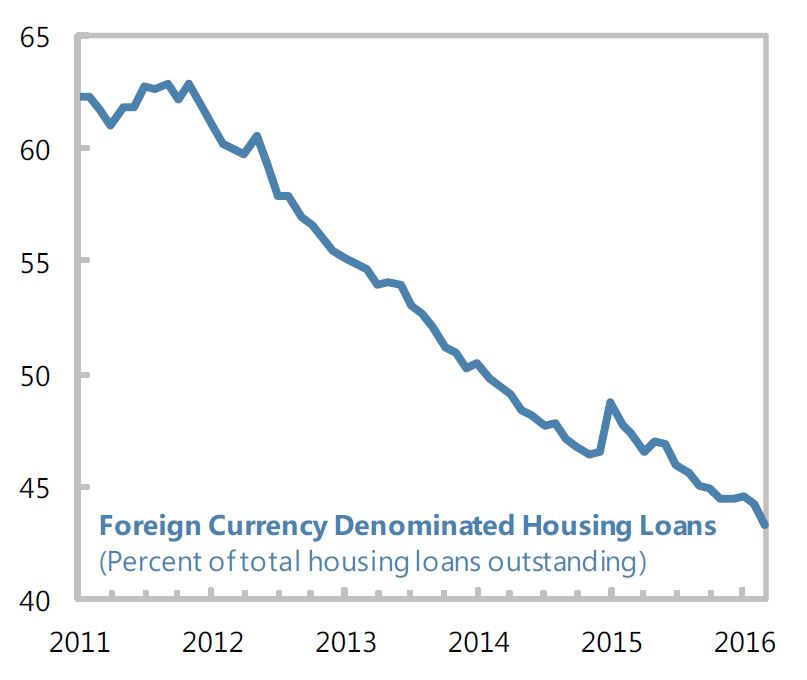
“Credit standards on loans have remained broadly unchanged in recent quarters, with the exception of housing loans, where standards tightened on the back of new prudential recommendations and reduced appetite among some banks for expanding the housing loan portfolio”, says IMF new report on Poland.



Posted by at 5:00 AM
Labels: Global Housing Watch
Wednesday, July 13, 2016
House Prices in Czech Republic
“A strong housing market is becoming a potential source of risk. Mortgage rates are at historic lows and have boosted new mortgage lending to a 10-year high, thus putting upward pressure on prices. Residential housing offer prices increased by 10 percent y-o-y in 2015:Q4, despite a 16 percent increase in housing starts. A slight deterioration in the affordability-of-housing indicators has taken place recently despite strong wage growth and a continued decline in interest rates. On the other hand, the estimated average apartment price-to-annual wage ratio of 4 is still low by international standards. (…) Going forward, continued vigilance will be needed and, if current trends in the mortgages segment continue in the coming months, the macroprudential stance should be further tightened. Preference should given to targeted measures, including raising risk weights on mortgages, lowering LTV limits with possible regional differentiation, and issuing clear guidance on maximum debt-to income limits”, says IMF’s report on Czech Republic.
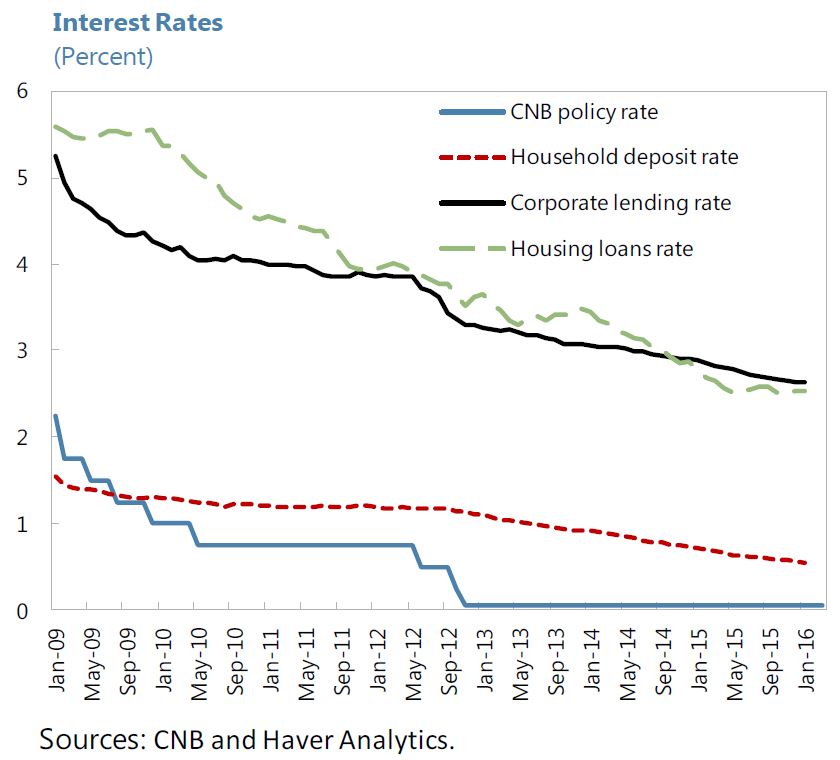
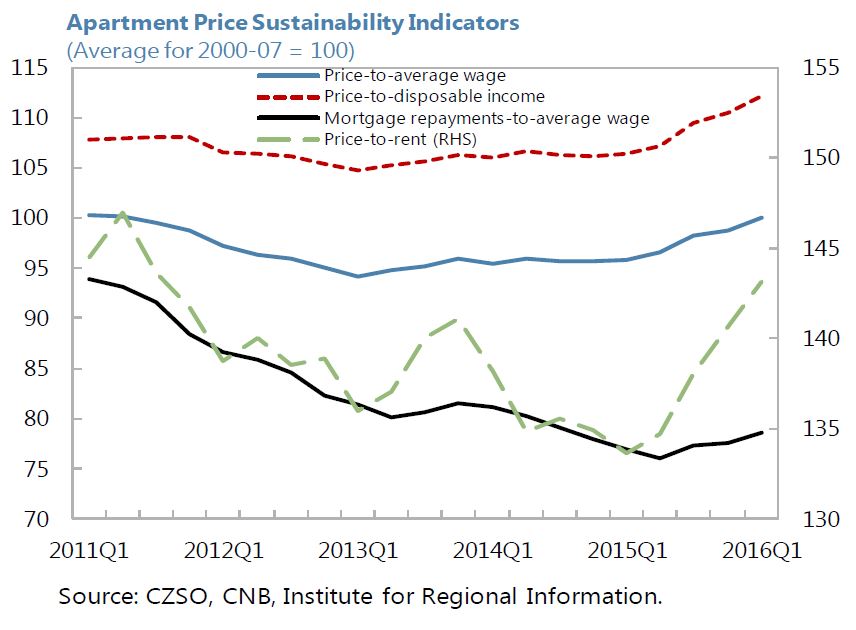
“A strong housing market is becoming a potential source of risk. Mortgage rates are at historic lows and have boosted new mortgage lending to a 10-year high, thus putting upward pressure on prices. Residential housing offer prices increased by 10 percent y-o-y in 2015:Q4, despite a 16 percent increase in housing starts. A slight deterioration in the affordability-of-housing indicators has taken place recently despite strong wage growth and a continued decline in interest rates. On the other hand,
Posted by at 5:00 AM
Labels: Global Housing Watch
Tuesday, July 12, 2016
What Keeps France’s Unemployment High?
Structural unemployment in France has long been elevated, and appears to have edged up further since the crisis. This reflects both demand and supply factors, including: high labor taxes, wage stickiness, a growing skill gap, hysteresis effects from the crisis years, a lengthy period of elevated economic uncertainty, inactivity traps created by the unemployment and welfare benefit systems, and demographic factors that have pushed up the labor force. The cyclical recovery is projected to bring down the unemployment rate only slowly, and the NAIRU is estimated to remain above 8 percent over the medium term. We investigate the structural causes of unemployment and potential remedies.
Reducing labor tax wedges can increase both output and employment. In France, CICE, PRS and other recent reforms have reduced the labor tax wedge for the low-paid workers. The wedge remains elevated for middle and upper incomes, but further reductions would require difficult policy trade-offs given the high level of public spending.
Strictness of employment protection in France is above the EU average. Labor arbitration procedures are cumbersome and allow making an appeal for a very long time after dismissal, which adds to uncertainty for companies. Reforms easing dismissal regulations could have a sizable positive impact on output and employment when economic conditions are strong. Early studies suggest that the proposed “El Khomri” law, by reducing judicial uncertainty around dismissals, could have a moderate impact on overall unemployment, while stimulating hiring on open-ended (CDI) contracts as opposed to temporary recruitment (on CDD).
Efficiency of collective bargaining depends on flexibility at the firm level, the reach of sector-level agreements, and the effectiveness of coordination among agents. IMF research suggests that France can be classified among countries with “low trust” and “some coordination”, which entails poor unemployment outcome. In France, trade unions play a leading role in collective negotiations even though membership is low. The El Khomri law would extend the scope for firm-level collective agreements.
While the replacement rate of unemployment benefits in France is broadly in line with other countries, eligibility criteria are relatively lax, with rapid qualification and accumulation of benefit rights, and weak job search requirements. Moreover, specificities of the benefit formula create incentives for alternating between ultra-short contracts and unemployment periods.
The ratio of minimum to median wage in France is among the highest in the OECD, which may adversely affect job market chances for the young, the low-skilled, and the long-term unemployed. Its automatic annual adjustment can contribute to wage stickiness.
A detailed analysis by my IMF colleague Nicoletta Batini.
Structural unemployment in France has long been elevated, and appears to have edged up further since the crisis. This reflects both demand and supply factors, including: high labor taxes, wage stickiness, a growing skill gap, hysteresis effects from the crisis years, a lengthy period of elevated economic uncertainty, inactivity traps created by the unemployment and welfare benefit systems, and demographic factors that have pushed up the labor force.
Posted by at 12:28 PM
Labels: Inclusive Growth
Subscribe to: Posts



